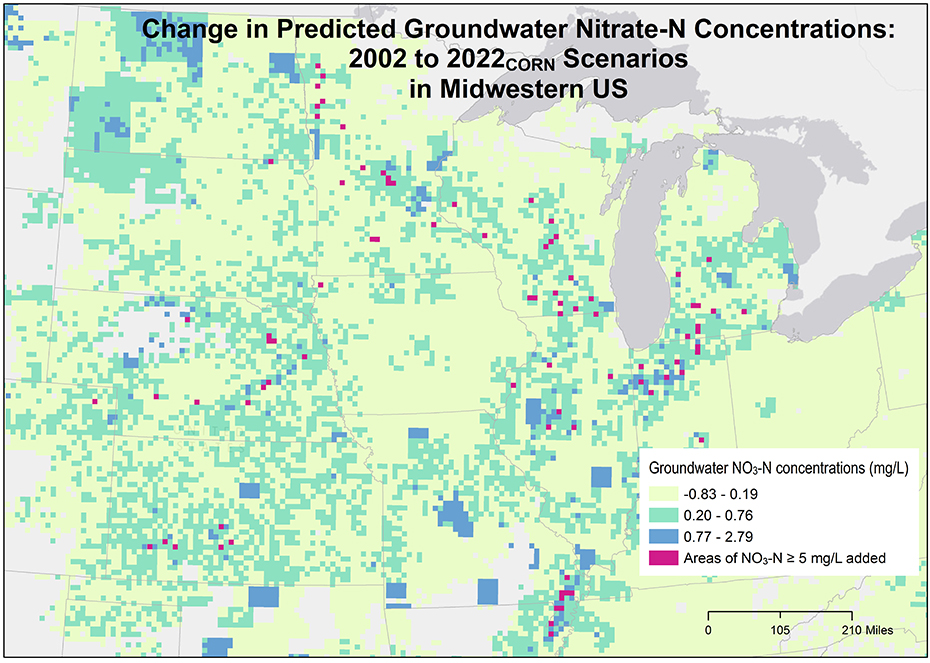Nitrate in Groundwater - CMAQ
Attributing nitrogen (N) in the environment to emissions from agricultural management practices is difficult because of the complex and inter-related chemical and biological processes associated with N and its cascading effects across land, air and water. Such analyses are critical, however, in understanding the benefits and disbenefits associated with environmental management options, such as the use of corn to produce biofuels. Coupled physical models present new opportunities to understand relationships among environmental variables across multiple sources, pathways and scenarios. In this study, a coupled modeling system was used to assess the impacts of increased corn production on groundwater. In particular, the study showed how the models provide new information on the drivers for contamination in groundwater, and then relate pollutant concentration changes attributed to increased corn production between 2002 and 2022 to health and cost outcomes.
To accomplish this, the CMAQ model was coupled with an agricultural modeling system to examine the impact of N inputs from corn production on ecosystem and human health. The coupled system accounts for N deposited or emitted to and from the land surface, providing a unique opportunity to examine the effect of management practices such as type of fertilization, tilling and irrigation on groundwater quality.
This research revealed that aquifer type, percent land use, number of animal feeding operations, N fertilizer and soil properties were all important predictors of nitrate in groundwater. To calculate health impacts, the researchers identified a health impact function for excess spina bifida cases resulting from exposure to drinking water with > 5 mg/L groundwater nitrate. Nitrate in groundwater was predicted to increase above the drinking water threshold of 5 mg/L in some areas as a result of the increased corn production scenario, resulting in a slightly increased risk of spina bifida birth defects.
References
Garcia, V., Cooter, E.J., Hinckley, B., Murphy, M., Xing, X., Crooks, J. (2017). "Examining the impacts of increased corn production on ground water quality using a coupled modelling system." Science of the Total Environment, 586, 16-24. doi: 10.1016/j.scitotenv.2017.02.009

